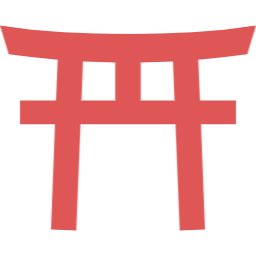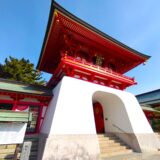目次
- 【Miyajidake Shrine summary】
- 【Miyajidake Shrine road approaching a shrine】
- 【Miyajidake Shrine The Path of Light】
- 【Miyajidake Shrine ruins of the main shrine】
- 【Miyajidake Shrine precincts】
- 【Miyajidake Shrine Okunomiya】
- 【Miyajidake Shrine Nearby attractions】
- 【Miyajidake Shrine Access】
- Manager’s Comments
- Miyajidake Shrine
【Miyajidake Shrine summary】
Miyajidake Shrine is said to have been built between 1,600 and 1,700 years ago, or 320 years to the west, although the exact date of its founding is unknown. According to the Kojiki (Record of Ancient Matters) and Nihonshoki (Chronicles of Japan), the shrine was founded when Empress Jingu set up an altar at the top of Miyajidake to enshrine Tenjin Jigion and pray before setting sail for the Korean Peninsula. It is the head shrine of all Miyajitake shrines in Japan.
The three main deities of Miyajitake are Empress Jingu, the Great Goddess of Katsumura, and the Great Goddess of Katsuyori. Since then, the shrine has been worshipped by many as “the god of good fortune that overcomes all obstacles.
【Miyajidake Shrine road approaching a shrine】
The approach to the shrine is a straight line to the sea and is wonderfully made. The path leads to the third torii (shrine gate). After that, there is a long flight of stone steps leading up to another torii gate, and at the top of the stairs is the “Path of Light”.
![Miyajidake Shrine [Fukuoka] DSC 2087 1024x768 - Miyajidake Shrine [Fukuoka]](https://japan-shrine.info/wp-content/uploads/DSC_2087-1024x768.jpg)
【Miyajidake Shrine The Path of Light】
Twice a year, the “Sunset Festival” is held, where you can see the “Path of Light” where the sun and the approach to the temple are in a straight line. It is only for two days every year around February and mid-October.
![Miyajidake Shrine [Fukuoka] DSC 2141 1024x768 - Miyajidake Shrine [Fukuoka]](https://japan-shrine.info/wp-content/uploads/DSC_2141-1024x768.jpg)
During this time of the year, the temple is very crowded with tourists from outside of the prefecture, and numbered tickets are distributed, but they disappear quickly.
【Miyajidake Shrine ruins of the main shrine】
![Miyajidake Shrine [Fukuoka] DSC 2139 1024x768 - Miyajidake Shrine [Fukuoka]](https://japan-shrine.info/wp-content/uploads/DSC_2139-1024x768.jpg)
Some of you may feel uncomfortable on the approach after climbing the light stairway. There is now a building, and when you go around it, you will find a magnificent sacred tree. The stone monument says “ruins of the main shrine” and it seems that there used to be a main shrine here. I don’t know what is going on here, but it looks as if it is intentionally hidden.
【Miyajidake Shrine precincts】
The water trickles down the transparent glass surface of the hand-watering basin. I thought it was a wonderful fusion of technology and tradition in its elaborate construction.
![Miyajidake Shrine [Fukuoka] DSC 2093 1024x768 - Miyajidake Shrine [Fukuoka]](https://japan-shrine.info/wp-content/uploads/DSC_2093-1024x768.jpg)
![Miyajidake Shrine [Fukuoka] DSC 2103 1024x768 - Miyajidake Shrine [Fukuoka]](https://japan-shrine.info/wp-content/uploads/DSC_2103-1024x768.jpg)
This shrine was beautifully maintained and cleaned despite its size.
![Miyajidake Shrine [Fukuoka] DSC 2099 1024x768 - Miyajidake Shrine [Fukuoka]](https://japan-shrine.info/wp-content/uploads/DSC_2099-1024x768.jpg)
The Izumo-taisha Shrine in Shimane Prefecture is also said to be the largest in Japan, with a diameter of 2.6 m, length of 11 m, and weight of 3 tons. The Izumo-taisha shrine is not a temple, but a Shinto music and dance hall, and this is the largest sacred straw rope of its kind in Japan. It is surprising that this one is replaced every year.
【Miyajidake Shrine Okunomiya】
![Miyajidake Shrine [Fukuoka] DSC 2112 1024x768 - Miyajidake Shrine [Fukuoka]](https://japan-shrine.info/wp-content/uploads/DSC_2112-1024x768.jpg)
In addition to the main shrine, there are eight other shrines enshrined in the shrine, called “Okunomiya Hakusha. Many people have been visiting the shrine since ancient times because of the belief that if one visits each shrine, one’s great wish will be fulfilled. A new approach to the shrine appears when you go to the back of the main hall.
![Miyajidake Shrine [Fukuoka] DSC 2132 1024x768 - Miyajidake Shrine [Fukuoka]](https://japan-shrine.info/wp-content/uploads/DSC_2132-1024x768.jpg)
There are seven gods of good fortune; 2. Inari Shrine, which protects food and rice policies; 3. Fudo Shrine, which removes misfortune and evil; 4. Manjizoson, a guardian deity for children; 5. Koi no Miya, which protects women in body and soul; 6. Sanpo-arajin, which protects against fire; 7. Suijin Shrine, which keeps water flowing; and 8. Yakushi Shrine, which saves people from all kinds of diseases and difficulties.
![Miyajidake Shrine [Fukuoka] DSC 2118 1024x768 - Miyajidake Shrine [Fukuoka]](https://japan-shrine.info/wp-content/uploads/DSC_2118-1024x768.jpg)
There were also two owls near the place where omikuji and amulets are sold. A red seal is also available as a symbol of good luck for married couples.
【Miyajidake Shrine Nearby attractions】
Munakata-taisha Henzumiya Shrine
【Miyajidake Shrine Access】
Manager’s Comments
The approach to the eight inner shrines was both sacred and nostalgic. I visited the shrine first thing in the morning, so I could not see the path of light, but even in the morning it was a beautiful sight. This shrine seems to have a strong tourist focus, but I think it is better to visit first thing in the morning with the locals while enjoying nature.
7-1 Miyamotomachi, Fukutsu-shi, Fukuoka 811-3309, Japan
※Free parking available
 Tour of Japanese shrines and temples
Tour of Japanese shrines and temples 

![Miyajidake Shrine [Fukuoka] fb49cb203cd9b725e0071895c89c84db - Miyajidake Shrine [Fukuoka]](https://japan-shrine.info/wp-content/uploads/sng/fb49cb203cd9b725e0071895c89c84db.jpg)
![Miyajidake Shrine [Fukuoka] DSC 3379 150x150 - Miyajidake Shrine [Fukuoka]](https://japan-shrine.info/wp-content/uploads/DSC_3379-150x150.jpg)
![Miyajidake Shrine [Fukuoka] 4362846 m 150x150 - Miyajidake Shrine [Fukuoka]](https://japan-shrine.info/wp-content/uploads/4362846_m-150x150.jpg)
![Miyajidake Shrine [Fukuoka] DSC 3325 150x150 - Miyajidake Shrine [Fukuoka]](https://japan-shrine.info/wp-content/uploads/DSC_3325-150x150.jpg)
![Miyajidake Shrine [Fukuoka] DSC 2052 150x150 - Miyajidake Shrine [Fukuoka]](https://japan-shrine.info/wp-content/uploads/DSC_2052-150x150.jpg)

